Introduction
Welcoming new students is a crucial part of any educational institution's success, but the old-school student onboarding process has lost its appeal. Big tech developments such as generative AI can revolutionize how schools and universities manage and support new students.
Student onboarding is usually the first step in a student's academic journey at an institution, and streamlining it with Generative AI can make students feel supported and heard right from day one, and kick off a great start.
By 2025, it’s projected that 85% of educational institutions will use AI to personalize onboarding experiences. Integrating generative AI into the onboarding process creates a more engaging and supportive environment for students from day one.
In this blog, we'll explore the myriad ways Generative AI can streamline student onboarding, ensuring a seamless and delightful experience for both students and staff.
Let’s Begin.
What is Generative AI?
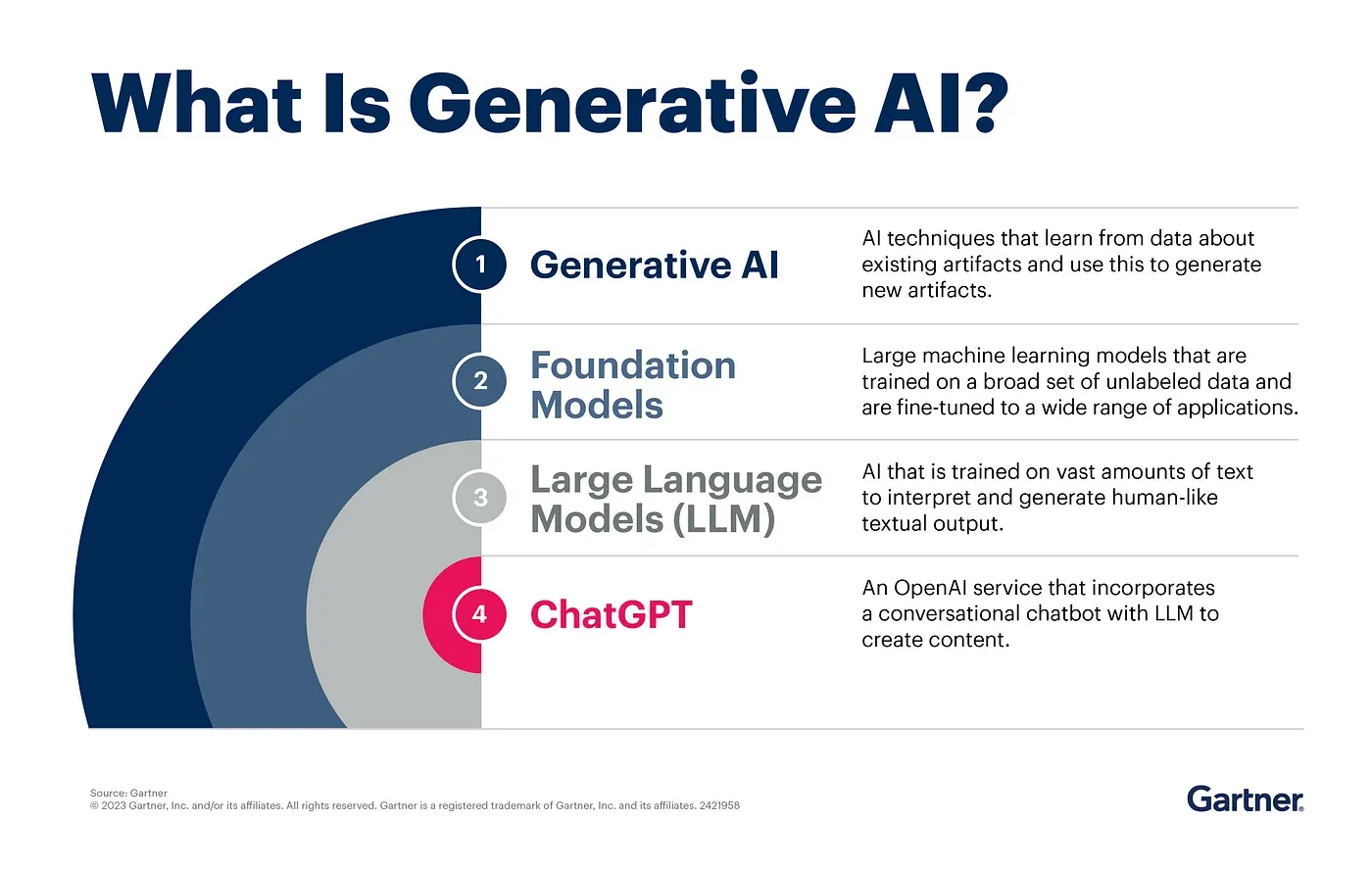
Generative AI, or GenAI, is a branch of artificial intelligence that specializes in curating new original content. Unlike traditional forms of AI, which are trained to recognize patterns in data and make decisions based on previously learned data, generative AI produces original data that mimics the input data it was trained on.
This is achieved with the help of advanced machine learning and deep-learning models, such as neural networks, which generate high-quality content such as text, images, music, and more.
Differences from Traditional AI
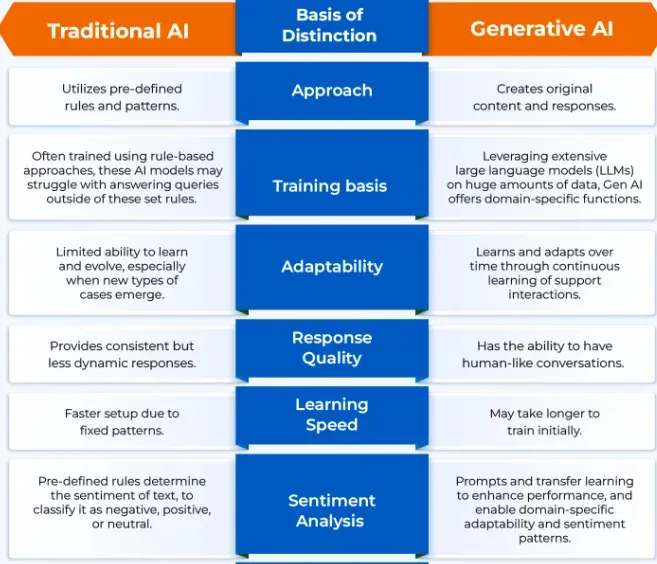
Let us look at the differences between Traditional AI vs Generative AI :
Traditional AI
Features of Traditional AI are :
- Trained to recognize patterns and make decisions based on learned data.
- Used for tasks like email classification, predicting house prices, and repetitive automation tasks.
- Limited to performing routine tasks on existing data.
Generative AI
Features of Generative AI are :
- Produces original data mimicking the input data it was trained on.
- Uses advanced machine learning and deep-learning models, such as neural networks.
- Capable of generating high-quality content like text, images, music, and more.
Advantages of Generative AI
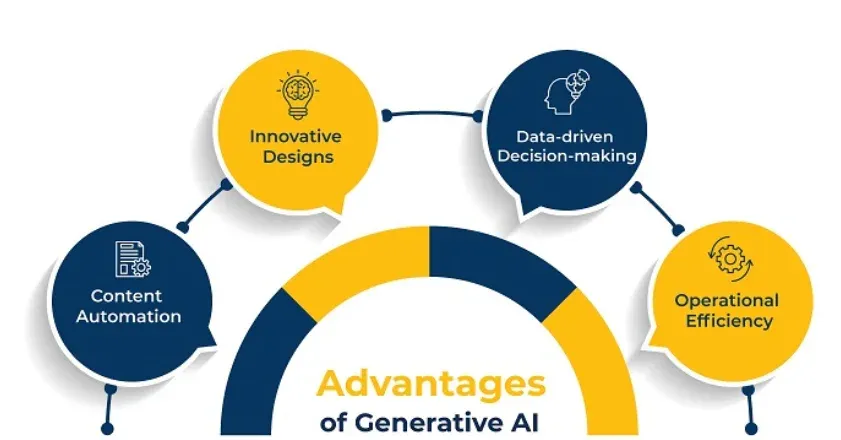
Let us see the pros and benefits of using Generative AI :
- Learn from vast amounts of data.
- Produces original outputs resembling real input data.
- Excels at tasks like writing articles, composing music, generating realistic images, and creating any type of new content.
Examples and real-world applications
Let us look at some real-world examples that we see around us :
- OpenAI’s ChatGPT is for generating sample email templates.
- Meta AI chatbot on WhatsApp.
- GitHub Copilot assists developers by suggesting code snippets and completions as they write, streamlining the coding process, and reducing manual effort.
- DALLE 2 by OpenAI creates detailed images from textual descriptions, allowing users to generate unique artwork based on their prompts.
- OpenAI’s upcoming Sora, a text-to-video model, is capable of creating high-dimension short visual clips based on user prompts.
How can generative AI streamline the student onboarding process?
Top Generative AI tools can streamline the student onboarding process by automating several repetitive tasks and curating customized content tailored to specific needs. Let’s look at some of the possible use cases
Consultation for every student
The top Generative AI tools revolutionize student consultations during the student onboarding process by providing them with personalized and instant support through AI-powered chatbots and virtual assistants.
They can address a wide range of student inquiries, from academic advice to campus resources offering tailored guidance based on their student profile.
For example, Arizona State University uses an AI-driven virtual assistant called "Sunny" to provide personalized academic advice and support to students, helping them with course selections, registration, and navigating campus resources.
Boosting Admissions with AI-Generated Leads
AI-powered virtual assistants can interact with potential students, answering their questions and providing detailed information about different programs, available scholarships, entry requirements, and campus life.
These interactions not only nurture interest but also gather valuable data on prospective students' preferences and behaviors.
By analyzing this data, generative AI can identify high-quality leads and tailor follow-up communications to increase the likelihood of conversion, ultimately enhancing the admissions process and driving enrollment growth.
For example, Cyboard School, which offers classes for 1st to 8th-grade students using AI and immersive technology, was able to gather admission leads from their live chat feature.
Automating Form Filling and Document Submission
Here, GenAI handles form-filling and document submission, cutting down on manual work and speeding up the process. With AI tools, students upload documents, and the student onboarding management system extracts details to fill out forms accurately, reducing errors and saving time.
For example, The University of Adelaide implemented an AI-powered system that automates form filling and document submission for student enrollment, significantly reducing processing times and administrative workload.
Suggested Reading:5 ways educational chatbots can make students' lives easier!
Personalized Welcome Messages and Guidance
Generative AI can craft personalized welcome messages for new students, including essential information about the campus, classes, and activities. It offers tailored advice based on individual interests, making students feel more welcomed and informed.
For instance, the University of California, Berkeley, utilizes “Berkeley AI Assistant” to send personalized welcome messages and guidance to incoming students. This personalized welcome touch makes the students feel warmly welcomed.
Virtual Assistants for Real-Time Support
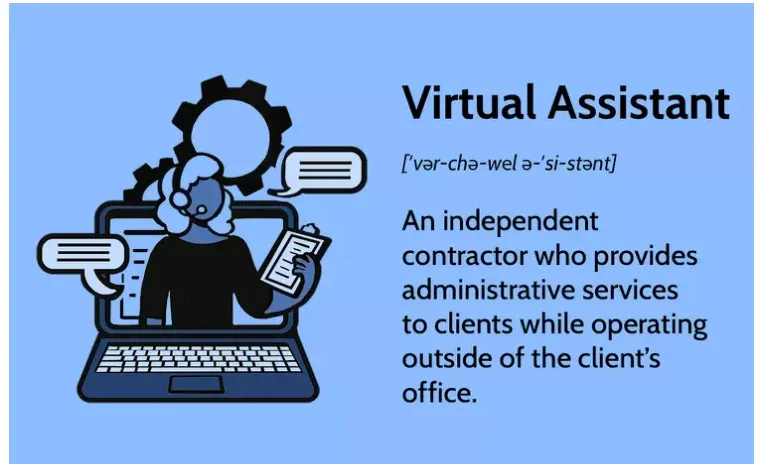
Virtual assistants powered by Generative AI provide 24/7 real-time support to new students. This ensures help is always available, making the system more efficient and responsive.
For example, the University of Michigan uses “RoboAdvisor,” a virtual assistant that offers real-time support to students. RoboAdvisor handles queries about course schedules, academic advising, and campus services, providing instant, accurate responses and assisting students with various administrative tasks.
AI-Driven FAQs and Knowledge Bases
Generative AI can create and manage FAQs and knowledge bases, providing instant answers to common questions. This reduces the burden on administrative staff and ensures easy access to information.
For example, the University of Illinois at Urbana-Champaign employs “Ask AI,” an AI-driven FAQ and knowledge base system that helps students quickly find answers to common questions about admissions, registration, and campus services.
The system provides accurate, up-to-date information and reduces the need for manual support from staff.
Benefits of Using Generative AI in Student Onboarding
Integrating top generative AI tools into the student onboarding management system offers significant monetary and labor benefits. By automating routine tasks institutions save time and resources, making the onboarding process cost-effective and scalable.
Let us see the benefits in detail :
Monetary and Labor Benefits
The automation of repetitive tasks reduces administrative costs and the need for additional staff, leading to lower overall expenses.
Additionally, by handling routine inquiries and tasks, AI frees up staff to focus on more complex and personalized support, improving efficiency and staff satisfaction while ensuring a smoother onboarding experience for students.
Scalability and Handling Large Influxes
Generative AI solutions are highly scalable. They can manage a large influx of applications without compromising on efficiency or accuracy.
During peak enrollment periods, top generative AI tools ensure that the student onboarding management system can handle increased demand seamlessly, providing a smooth experience for all applicants.
Enhanced Personalization
New students receive tailored welcome messages and guidance based on their interests and needs. This personalization helps students feel more welcomed and informed, improving their overall onboarding experience.
Top generative AI tools ensure that each student gets relevant information and support.
Improved Communication and Engagement
Communication and engagement are crucial in the student onboarding management system. Generative AI enhances these by providing real-time support through virtual assistants and AI-driven FAQs.
These tools ensure students get timely responses to their queries, making them feel supported and engaged from day one.
Increased Efficiency and Accuracy
Incorporating generative AI into the onboarding process increases efficiency and accuracy. Automated student onboarding management systems reduce human errors in form filling and document processing.
AI-driven FAQs provide instant, accurate answers, reducing the need for administrative intervention. This leads to a smoother, more reliable onboarding process for all students.
Implementing Generative AI in Educational Institutions
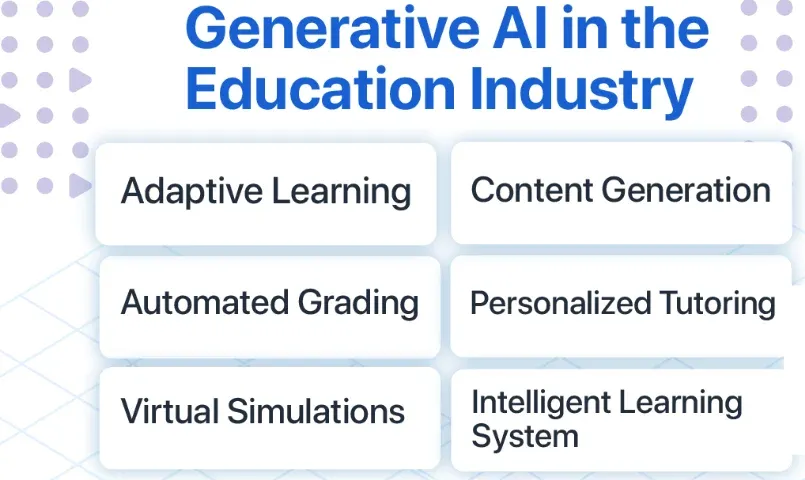
Generative AI transforms the student onboarding process by automating tasks, personalizing interactions, and providing real-time support. Here’s how to implement it effectively in educational institutions:.
Choosing the Right Generative AI Tools
Tips on choosing the best Generative AI tools for your student onboarding system :
- Evaluate different top generative AI tools based on features, scalability, and compatibility.
- Select tools that efficiently handle form filling, document submission, and personalized communication.
- Ensure the chosen tools enhance the student onboarding system.
Integrating AI with Existing Systems
It is important to integrate GenAI tools with current systems to streamline student onboarding :
- Ensure new AI tools work well with the existing student onboarding management system.
- Integrating generative AI with existing systems like Blackboard, Canvas, and PowerSchool is essential for seamless integration.
- These systems are widely used by educational institutions for managing student information and learning.
- Seamless integration ensures that top generative AI tools work well with the existing student onboarding management system, enhancing overall efficiency and minimizing disruptions.
- For example, HubSpot offers a chatbot builder integrated with its CRM to manage student interactions, capture inquiries from prospective students, provide instant responses, and schedule follow-up meetings with admissions counselors.
Training Staff and Educators
Timely upskilling of staff is very important to streamline student onboarding using GenAI :
- Conduct training sessions on using top generative AI tools and troubleshooting issues.
- Make learning resources available to equip them with the necessary skill set
- Ensure staff can leverage AI to its full potential for a smooth onboarding experience.
Monitoring and Evaluating AI Performance
Tracking performance for refinement is also crucial to effectively streamline student onboarding with GenAI :
- Track key performance indicators like processing times, error rates, and user satisfaction.
- Regularly evaluate AI performance to identify areas for improvement.
- Maintain high standards by using top generative AI tools and adapting to changing needs.
Streamline Student Onboarding Process With Generative AI BotPenguin
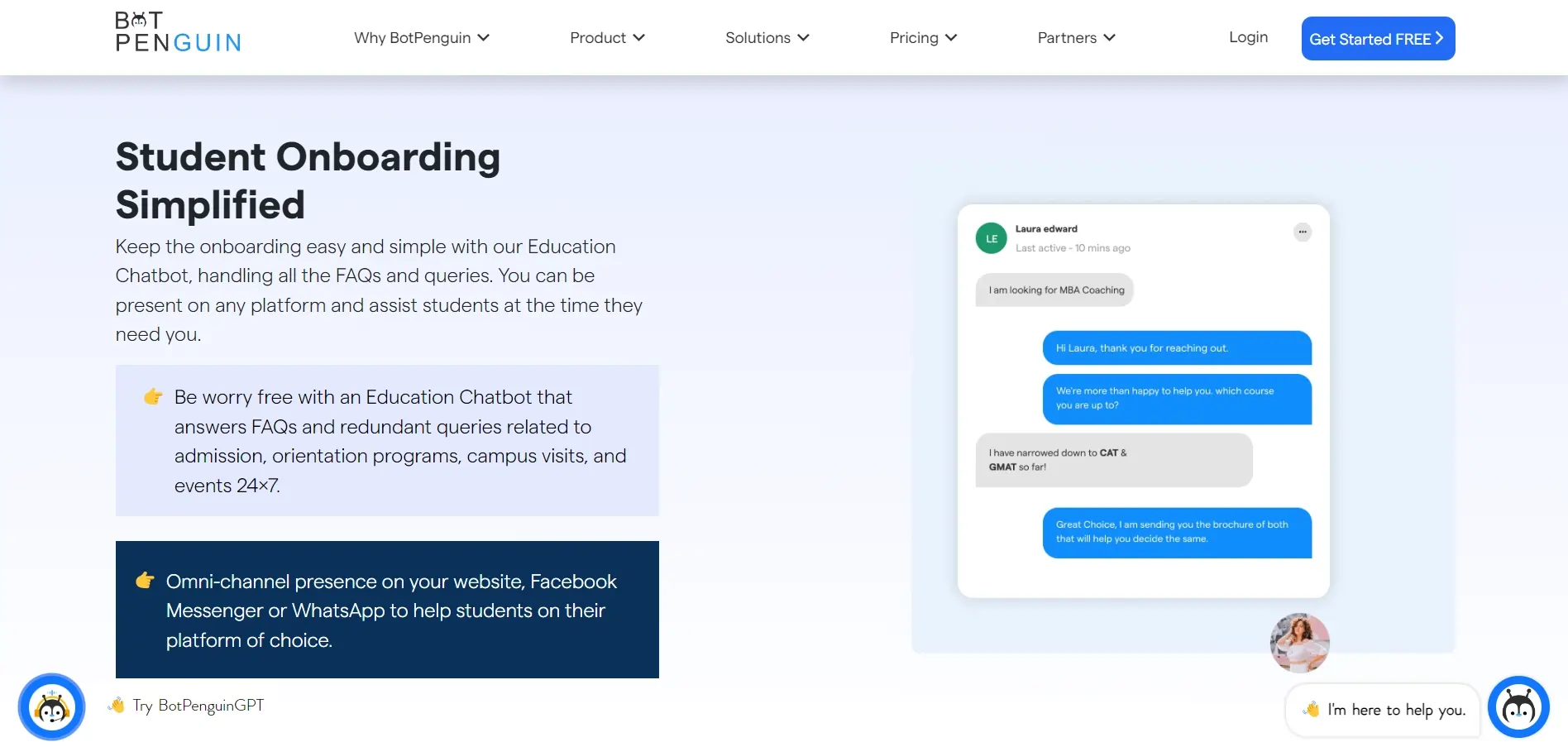
BotPenguin is an AI-powered tool designed to streamline student onboarding processes using Generative AI, making it more efficient, personalized, and user-friendly. Here are the features of BotPenguin that showcase the student onboarding process:
- Automation of Repetitive Tasks: BotPenguin automates mundane and repetitive tasks like form filling, document submission, and information verification, reducing the workload for administrative staff and minimizing errors.
- Personalized Communication: By leveraging Generative AI, BotPenguin tailors communication with students, providing them with personalized emails, messages, and notifications that cater to their individual needs and preferences.
- Interactive Onboarding Experience: The tool uses AI-driven chatbots to offer real-time assistance and answer student queries instantly, creating an interactive and engaging onboarding experience.
- Data-Driven Insights: BotPenguin collects and analyzes data during the onboarding process, providing institutions with valuable insights into student preferences, pain points, and areas of improvement.
- Time and Resource Efficiency: By automating and optimizing the onboarding process, BotPenguin allows educational institutions to save time and resources, enabling staff to focus on more strategic tasks.
- Scalability: The AI-driven nature of BotPenguin ensures that it can easily scale to accommodate large numbers of students, making it suitable for institutions of all sizes.
- Enhanced Student Satisfaction: With a smoother, more personalized onboarding process, students are more likely to have a positive experience, leading to higher satisfaction and better retention rates.
Real-world Use Cases
Let us examine a few examples of generative AI being used in student onboarding management systems globally:
- OckyPocky is a kid's English learning app with a live chat support feature for children aged two to six. Parents can track their child's global rank, and the app offers live chat classes with the top 1% of teachers to enhance English and creativity.
- Cyboard School offers classes for 1st to 8th grade using AI & immersive technology. They have also been able to generate admission leads through their live chat feature.
- Georgia State University utilizes an AI-driven virtual assistant called "Pounce" to engage with prospective students and provides personalized guidance on enrollment steps, answers questions about financial aid, and sends reminders for important deadlines, significantly improving student engagement and conversion rates.
- Coursera’s AI-Powered Student Onboarding Experience guides new learners through its platform. The AI system recommends courses and resources based on the learner’s goals and interests and helps them get acquainted with the learning environment.
- Duolingo’s Customized Language Learning Paths uses generative AI to tailor language learning experiences for new users. The AI adapts lesson plans and exercises to match individual learning styles and proficiency levels.
Best Practices for AI-Driven Student Onboarding
To make the most of generative AI in student onboarding, let us look at the following practices :
Ensuring Data Privacy and Security
Data privacy and security are paramount when using even the top generative AI tools. Ensure that your tools comply with privacy regulations such as GDPR or DPDPA (in India). Incorporate data protection measures and regularly update security protocols to counter potential data breaches. Educate staff and students on data privacy practices. By prioritizing data privacy, you build trust and integrity in your student onboarding system. This not only allows students to trust your systems but also seamlessly coordinate with them as well.
Continuous Monitoring and Improvement
Regularly check the performance of best generative AI tools, gather feedback from users, and analyze this data to identify areas for improvement. Update the AI tools to incorporate new features and address any of the underlying issues.
Continuous improvement ensures the student onboarding management system remains effective and adapts to changing needs. It also enables us to identify potential threats and areas of concern and take the necessary courses of action to address them.
By staying proactive, you can ensure that the student onboarding management system continues to provide a hassle-free experience to new students.
Gathering Feedback from Students
Conduct surveys and interviews and circulate feedback forms to students to gather data about their onboarding experience. Ask specific questions about their interactions with top Generative AI tools and the overall process. This feedback can directly assist in refining the existing systems. Listening to students helps you understand their needs and preferences, ensuring the onboarding process is student-centric. This approach leads to higher satisfaction and a more welcoming environment for new students.
Future Trends in AI and Student Onboarding
With the rapid advancement of technology and the age of innovation, the future of student onboarding may be completely revolutionized with cutting-edge developments. Let us see some probable future trends for student onboarding :
Increased Use of AI-Driven Personalization
The trend of AI-Personalization for student onboarding is only going to increase in future :
- By 2025, 85% of educational institutions will use AI to personalize onboarding experiences.
- Tailoring content and support to individual student needs
- The rise in adaptive learning platforms, AI-powered recommendation systems, and AI-powered feedback and assessments is predicted to revolutionize the student onboarding process.
Integration of AI with Augmented Reality (AR)
Combining Augmented Reality with Student onboarding :
- Combining AI with AR for immersive onboarding experiences.
- Making virtual campus tours more engaging and informative.
- Gartner predicts that by 2026, 60% of higher education institutions will implement AR in their onboarding processes.
AI-Powered Predictive Analytics
AI-driven predictive analytics can analyze data to predict which students might face challenges and provide proactive support. This could improve student retention rates by up to 20%, according to industry reports
Rise of Chatbots and Virtual Assistants
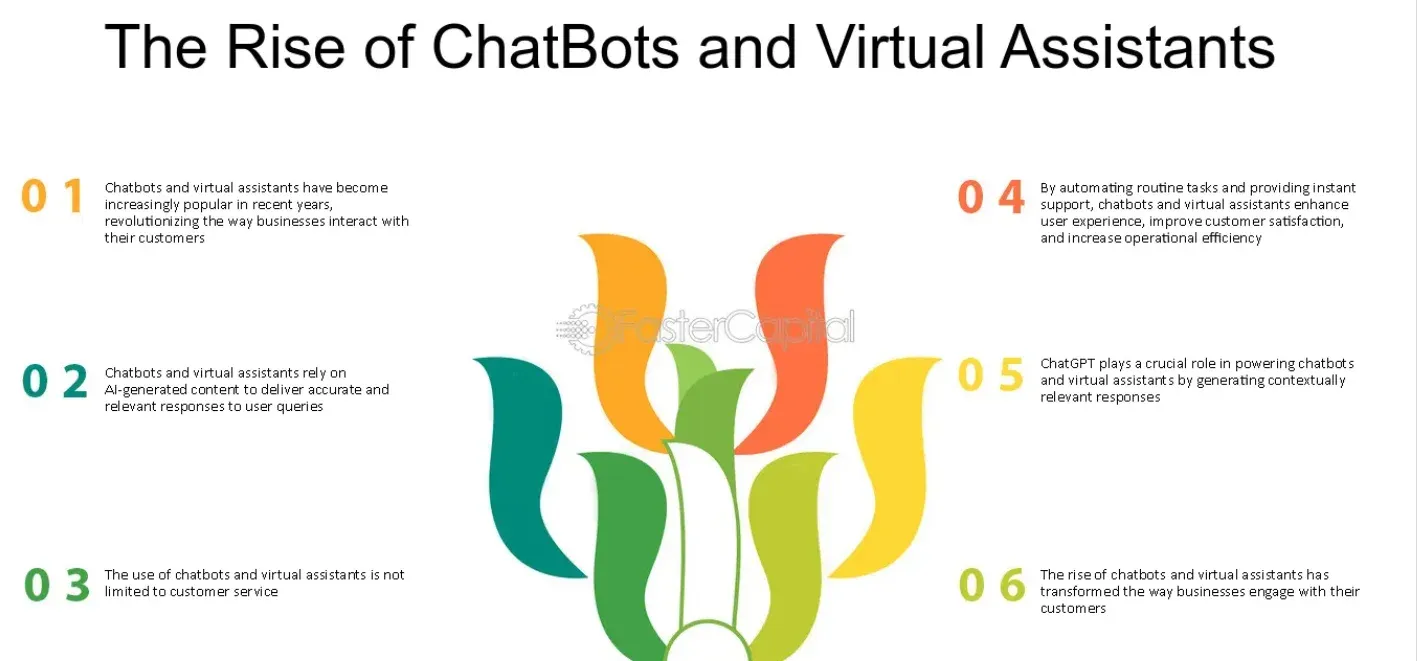
Chatbots are already all around us, no surprise that they'll enter the student onboarding domain as well
- By 2024, 80% of routine administrative tasks in onboarding will be handled by AI-driven chatbots.
- By 2026, AI-driven tools and chatbots are anticipated to handle over 50% of student onboarding tasks, significantly improving efficiency and personalization in educational institutions.
Suggested Reading:Unlocking New Possibilities: Chatbots for Education
Ethical Considerations
There are several ethical and moral concerns about the integration of GenAI into student onboarding :
- Addressing ethical concerns related to data privacy, security, bias, and transparency is going to become crucial
- Ensuring trust and integrity as AI becomes more integrated into onboarding processes.
- Users and consumers will be more digitally aware in regards to their data privacy
Conclusion
In conclusion, embracing Generative AI for student onboarding is like giving your school a superpower. It zaps away tedious tasks, personalizes the journey for each student, and makes the whole process a breeze.
Generative AI will help to automate several routine repetitive tasks and personalize the onboarding experience for each student uniquely. This not only makes the student personally feel heard and seen but also frees up unnecessary load from the administrative staff.
Revolutionizing tech developments now and then will only add to enriching the student onboarding experiences. For instance, platforms like BotPenguin leverage Generative AI to streamline student onboarding, enhancing efficiency, personalization, and engagement throughout the enrollment process. Imagine AI like BotPenguin handling all the paperwork while you focus on welcoming new students with open arms. With real-time tweaks and improvements, this tech ensures everything runs smoothly and keeps everyone happy.
Say goodbye to administrative headaches and hello to a vibrant, engaging onboarding experience. By adopting Generative AI, schools can stay ahead of the curve and create a fantastic first impression that sets the stage for academic success and a fun-filled educational adventure!
Frequently Asked Questions (FAQs)
What is generative AI and how does it help in student onboarding?
Generative AI creates new content and automates tasks, making the student onboarding process more efficient by reducing repetitive manual work, personalizing communications, and providing real-time support.
How can generative AI personalize the student onboarding experience?
Generative AI tailors its welcome messages, guidance, alerts, and support based on individual student data, thus creating a more personalized and engaging onboarding experience.
What tasks can generative AI automate in the student onboarding process?
Generative AI can automate form filling, document submission, sending personalized messages, and answering common questions through AI-driven virtual assistants.
Are generative AI tools easy to integrate with existing systems
Yes, many of the best generative AI tools are designed to seamlessly integrate with existing educational systems, ensuring a smooth transition and efficient operation. However, it is important to ensure the compatibility of the tools of your choice with your existing systems on an individual basis.
How does generative AI improve communication during student onboarding?
Generative AI sends timely, personalized updates and reminders, ensuring students receive relevant information at the right time, thus improving communication and engagement throughout the onboarding process.
What are the benefits of using generative AI for student onboarding?
Generative AI enhances efficiency, reduces human errors, provides personalized onboarding experiences, and provides real-time support, leading to a smoother and more effective student onboarding process. It also eases the burden on the administrative staff to focus on more important tasks.
